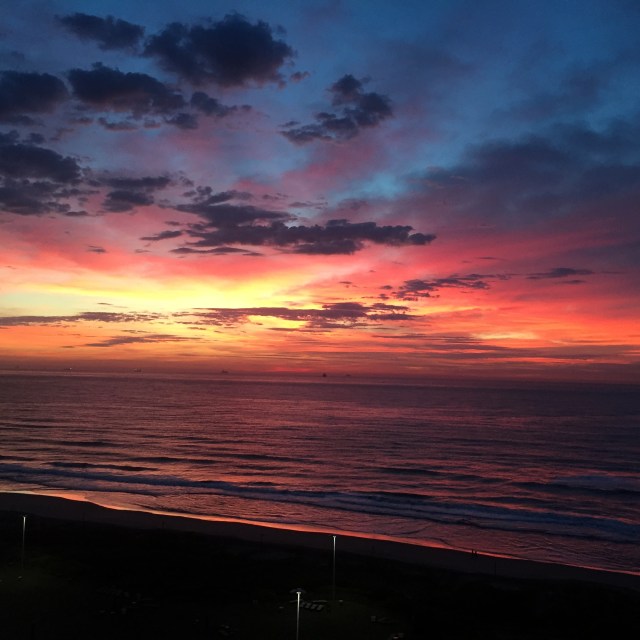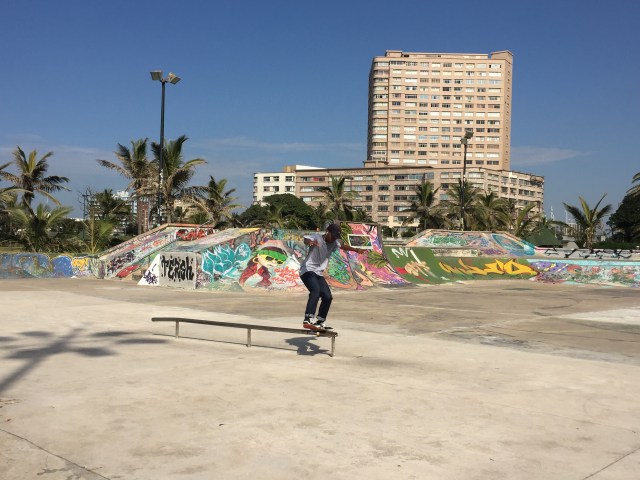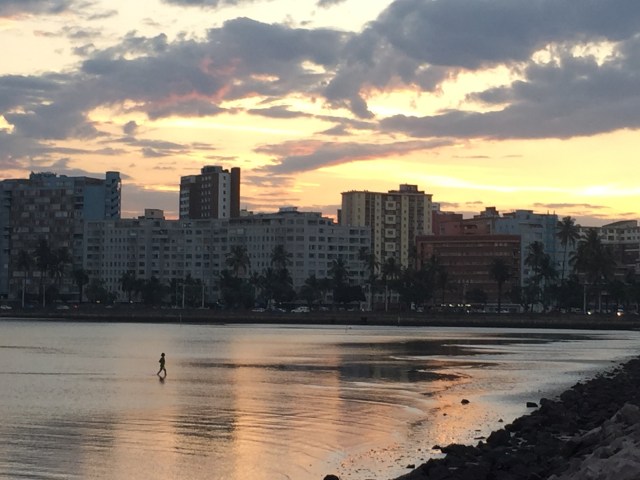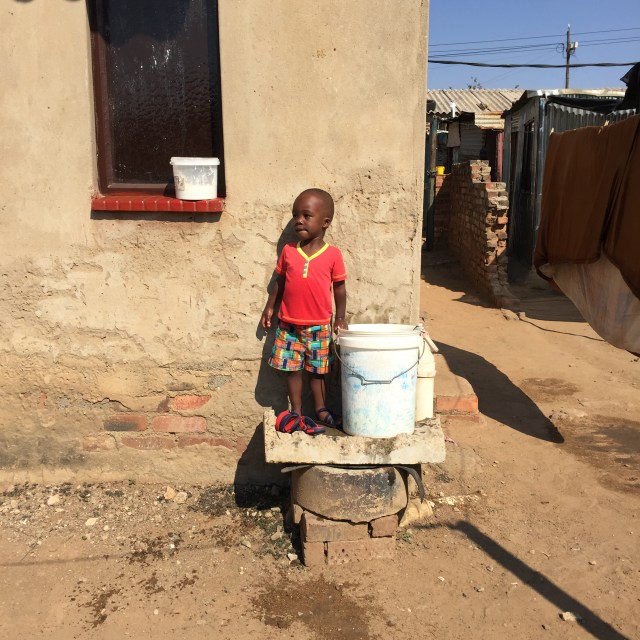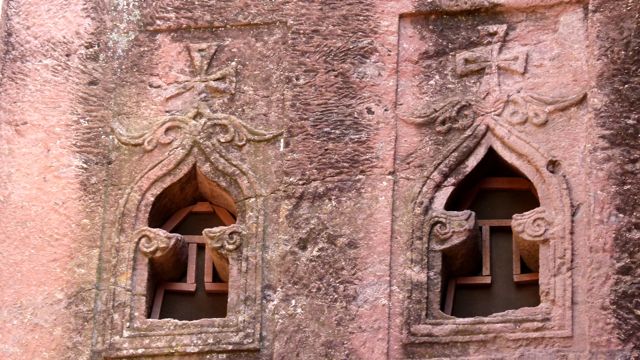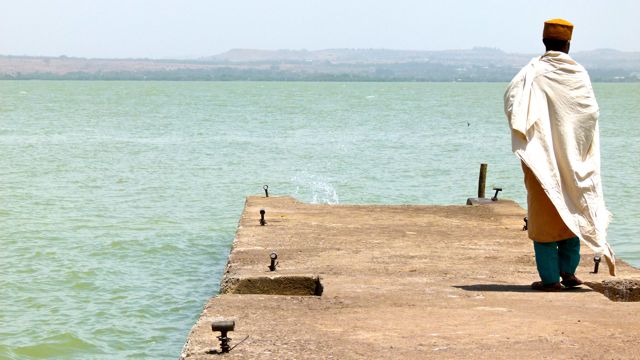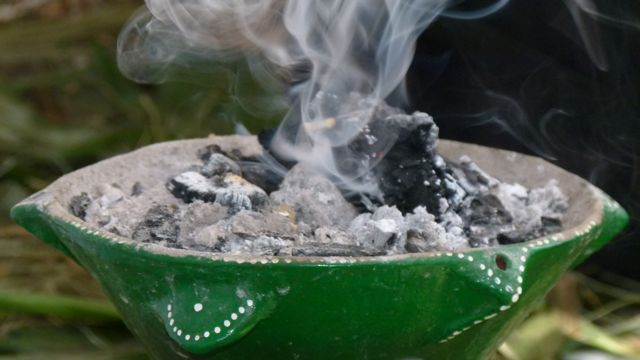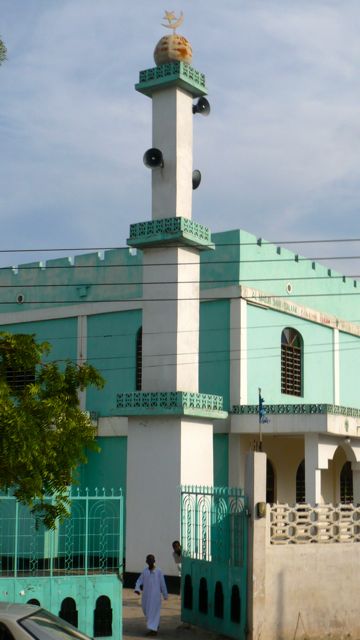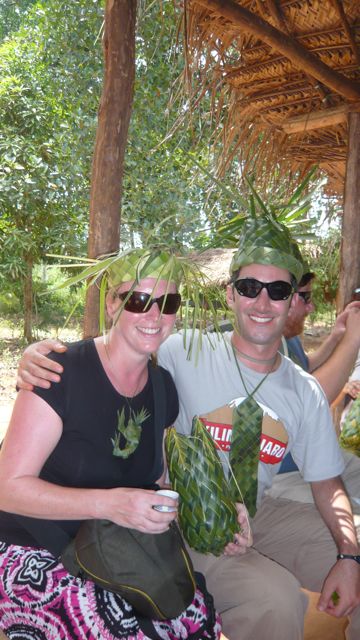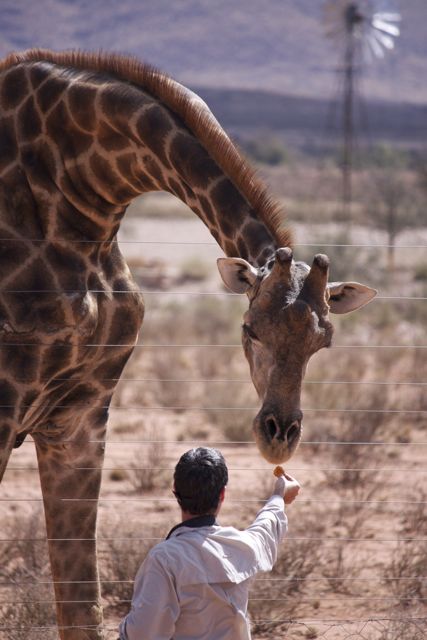Day 73: Leaving Addis Ababa

Samburu Tribeswoman, Northern Kenya
I’ve spent the last three weeks traveling from Nairobi, Kenya to Addis Ababa, Ethiopia. Internet is nearly nonexistent in rural Ethiopia, and where it is available, it takes 45 minutes to download one email. Hence the lag since my last blog update.
On my last day in Nairobi, I found out I was denied an Egyptian visa by the Egyptian embassy in Kenya, even after intervention by the American embassy in Nairobi! What trouble could I possibly cause in Egypt? Don’t answer that. One would think Egypt would be begging foreigners to come visit now after the revolution. But I guess the Egyptian embassy in Nairobi still hasn’t got the memo that Egypt is free and a new, more open regime is in power. Oh well, I’ll have to try my luck at the Sudan-Egypt border and get an Egyptian visa there – that is, if I get into Sudan! The Sudanese embassy in Addis never got my visa application, which I sent to the Sudanese Foreign Ministry nearly 4 months ago (along with a payment via Western Union to Khartoum, which sounded sketchy to me at the time, and my suspicions have now been proven correct!). So now I’ll have to try my luck at the Sudan-Ethiopia border in three weeks.
Unfortunately, because of the political troubles in Libya, I have had to cancel the expedition I was planning to Tripoli from Cairo. So Libya will have to wait until another trip to North Africa – Cairo to Marrakech, anybody?

The Road North from Nairobi
As we drove north from Nairobi through Kenya, sub-Saharan Africa was slowly coming to a close: the lush greenery gave way to dusty desert roads, churches gave way to Mosques, zebras gave way to camels, and modern facilities evaporated as we neared Ethiopia.


Northern Kenya

Crossing the Equator
On the way to Ethiopia, we had several stops in the Great Rift Valley of East Africa. The Rift Valley is where Africa is literally tearing itself apart – two different tectonic plates have been pulling apart from each other for hundreds of millions of years, creating volcanoes and lakes, and separating eastern Africa from the rest of Africa. The Great Rift Valley starts along the Israel-Jordan border, then slips into the Red Sea (which itself was created by the two tectonic plates pulling apart from each other and separating Africa from the Arabian peninsula), down through Ethiopia, Kenya, Tanzania and finally into Mozambique and the Indian Ocean. In a couple hundred million years, this entire region will separate itself from Africa and fall into the Indian Ocean as a huge new island, just like California will fall into the Pacific!

Rift Valley at 8000 feet, extinct volcano on upper left


Closer to Cairo than Cape Town!
Our first stops heading north from Nairobi were at Lake Naivasha and Lake Nakuru. Lake Nakuru is famous for its flock of 30,000 pink flamingoes.


Lake Nakuru


These Rift lakes are very famous for their abundant bird life, as they are soda lakes (full of sodium), which bread algae and other food for bird life.

An African fish eagle grabbing a fish out of the water

Tea Time!

A Jesus Bird Walking on Water

Twin Storks

Lake Nakuru Storks
I’ve seen so much wildlife so far, that I have a new wildlife viewing policy: “cats, kills, or sex.” That is, I only stop to see big “cats” (lions, leopards, cheetahs, and the occasional pussy cat), “kills” (anytime a predator has killed, or is about to kill, a prey), and animal “sex.” Anything else, been there, seen it, so don’t wake me up for it.

No I didn't skin this zebra, though I was tempted...
But to be fair, I had to make an exception to my wildlife viewing policy as we unexpectedly saw 3 black rhinos in Lake Nakuru. This was a special treat since they are quite rare in the wild compared to white rhinos.

A Rare Black Rhino

Black rhinos very close to civilization...
Oh and then there was the baboon sex…lots of it, on and on, nonstop…

We were incredibly fortunate to spend a night in a Samburu village in northern Kenya, right next to Samburu National Park. The Samburu are one of the many tribes of Kenya; they wear bright orange and red to scare off the wildlife. The contrast of colors and the desert makes for amazing photography.

Samburu Warrior Stud

- Samburu Tribe in Northern Kenya

- Samburu Women at Village Market


- Samburu Mother

The Samburu live in circular villages fenced with dense acacia bushes with 2-inch long thorns to keep out lions and other wildlife, which live right next to their villages. Inside their villages, the Samburu have circular pens where they keep their goats – also fenced with dense acacia thorn bushes.

Typical Samburu Home

We were welcomed by the Samburus like royalty – they are incredibly warm and hospitable, and much friendlier than the more famous Maasai tribe of southern Kenya. We went for an afternoon bath in the nearby river with them – boys on one side, girls on the other, and lions on the other bank! We had a few friendly races – whites (“mzungu” in Swahili) vs. Africans. Guess who won? Hint: The Kenyas are Olympic distance running champions…

Samburu River

Mzungu vs. African

Yippee! Celebrating the victory
In the evening, the Samburu put on a magical show for us around the campfire, as a warm breeze blew through the desert. The Samburu warriors perform a dance before they go to war with other tribes, and we had the good luck of seeing it live. The men stand in an outer circle surrounding an inner circle of women. The men jump up and down, while moving around the circle in a conga line, humming to a rhythm, clapping, and chanting “hey” in a very deep bass. The women shake their shoulders, swaying their necks, making their dozens of necklaces clink against each other and giving off a soothing metallic sound complementing the men’s chanting. We were invited to join the dance, and it was absolutely magical, mystical and trancelike. This was by far my favorite ethnic cultural experience in Africa so far, and it was a privilege to experience it, even for someone not so keen on ethnography.


Samburu Warrior Dance
There is very little light pollution in northern Kenya, so we were also privy to a magical light show of a thousand stars in the dark sky, where we could easily see the Milky Way, Orion, and both the Big Dipper and the Southern Cross as we were still relatively near the Equator. Of course, given how dark it was that we could see so many stars, it was also incredibly dark when we had to go outside the protected village fence in the middle of the night for a bush pee. We saw elephant and lion tracks on top of our bush pee spot the morning after… scary but thrilling! Can’t do that in Los Angeles!

The Big Dipper

The Milky Way and the Southern Cross, at bottom left, look for the 5 stars that look like a kite, with a red star inside

Orion, on the right, look for his belt of 3 stars
The morning after our visit with the Samburu tribe, we went into Samburu National Park on another game drive. We saw a couple interesting new animals, for example the highly endangered Grevy Zebra (which has very thin stripes compared to the more common Berchal zebra), and the Gerenuk – which is an antelope but likes to think it’s a giraffe because it has a long neck. The Gerenuk is the only antelope in the world that stands up on its two legs to eat leaves off trees. Go figure! Speaking of animals eating off trees, we also saw a tree-walking lion! Lions don’t usually climb trees (unlike leopards), but they do in Samburu National Park! Very bizarre!

Multi-headed Palm Tree at Samburu National Park, Kenya

Endangered Grevy Zebra

A Gerenuk Antelope

Look closely, there's a lion walking on the tree branch!

Samburu Lion

Who you looking at?
As we were leaving the national park early the following morning, we were treated to a rare viewing of 4 cheetahs — right next to the Samburu village where we slept outdoors a couple nights earlier and went for a bush pee! We’ve been chasing cheetahs throughout Africa, so it was a huge bonus to see them again, and so very close. They are incredibly beautiful cats!



Can you see the cheetah camouflaged in the bush?

Giraffes and cheetahs, living side by side in harmony...
We left Samburu and had a three-day trek north to the Ethiopian border, through one of the harshest climates on Earth. For nearly a thousand kilometers, all we could see was dry desert and thorny bushes. There wasn’t another car in sight for hundreds of miles. To call what we drove through a “road” would be generous. The bone-crushing dirt track was more like a series of interconnected series of potholes with a little bit of dirt stretching from one lava field to another. We averaged 20km an hour for about two days through endless Sahel and scrubland. The punishing northern plains of Kenya really felt like the bones of the Earth, incredibly dry and hot, and appropriate for a region where the world is tearing itself apart.

The Desolation of Northern Kenya

The "Road" to Ethiopia

This area of Kenya is ethnically Somali and right next to the border with Somalia. There have been lots of pirate raids into Kenya from Somalia, so we hired two army guards with AK-47s to come along with us on the three-day drive to the Ethiopian border, and protect us in the event of a Somali pirate raid. Given how slowly we were traveling, we were easy targets for a pirate raid. Thankfully, nothing happened and we arrived at the Ethiopian border safely, although drenched in sweat and dust after not having showered for three days trekking through the world’s bumpiest dirt road.

Maybe we should alert the US government of the secret Taliban hiding spot?
Eight days after leaving Nairobi, we finally arrived at the Ethiopian border, and entered an entirely new world: the least developed country I’ve ever visited. Ethiopia works on its own time zone — no, not a couple hours before or after GMT. They have their own system of measuring time: 1am is always considered sunrise (so how we would calculate 6am roughly per normal East Africa time); 6am is always noon in the rest of East Africa; and their 12pm is 6pm in the rest of East Africa. It’s impossible to figure out what time it is in Ethiopia, so I’ve stopped trying. I just show up when I feel like it, much like many Africans.
We spent the next five days in the Lower Omo Valley in southwestern Ethiopia, which is almost impossible to visit during the rainy season when roads are washed out (we were fortunate to beat the start of the rainy season by 2 days). It was incredibly hot in the Lower Omo Valley – one of our lunchtime day hikes felt like a death march, it was 110 degrees in the shade! And the wind factor made it feel even hotter!

Descending down into the Lower Omo Valley

The Lower Omo Valley

Dug-out canoes on the Omo river, very wobbly!
The Lower Omo valley is full of various ethnic tribes, many of which hadn’t even been explored by westerners until about 15 years ago. The Omo valley tribes are literally the last tribes of Africa. They lead very pastoral lives, raising goats and cattle, and are entirely devoid of modern civilization. Visiting the Omo valley felt like the end of the world and a throwback to the Stone Age. All of the tribes live in mud and thatch roof huts; if they’re lucky, they might have some plastic bags to cover their roofs (in other parts of Ethiopia, a rich house has a tin roof).

Hamer Tribal Women, they grow dreads and color them with clay

Anklets on young unmarried women, can only be removed by their husbands on their wedding day, sounds like a shackle

Bumi tribal women's skirts, made out of beads
 The Omo tribes don’t send their kids to school even though the Ethiopian government provides basic education. The tribal elders feel it’s better to let the kids take care of the goats rather than educate them. Amongst the Hamer ethnic tribe, only 6 people out of a total of nearly 50,000 have even completed high school! While the Omo tribes seem very happy in their lifestyle, I would get out of the tribal areas and head to the nearest big city as soon as possible if I were born into this society. The tribes lead an incredibly harsh existence – I don’t understand why people would choose to continue living like it’s the Stone Age.
The Omo tribes don’t send their kids to school even though the Ethiopian government provides basic education. The tribal elders feel it’s better to let the kids take care of the goats rather than educate them. Amongst the Hamer ethnic tribe, only 6 people out of a total of nearly 50,000 have even completed high school! While the Omo tribes seem very happy in their lifestyle, I would get out of the tribal areas and head to the nearest big city as soon as possible if I were born into this society. The tribes lead an incredibly harsh existence – I don’t understand why people would choose to continue living like it’s the Stone Age.

Bumi Dance Ceremony



Entertainment for the lucky ones


Walking miles to get some water for his family
The Omo valley tribes constantly fight and pillage each other’s villages for camels and goats so that they can raise enough “bride price” to pay for weddings – it’s not uncommon for a bride’s family to demand 30 cattle and hundreds of goats as a bride price to be paid by the groom’s family (sort of like a reverse dowry). These people are incredibly poor, and so instead of waiting and saving for years, it’s quite common for the various tribes to fight each other and pillage. And EVERY woman is circumcised (what we call female genital mutilation in the West) — they WANT to be circumcised — otherwise they may not be able to find a suitable husband.

Teenagers
While it was interesting to photograph the last tribes of Africa, I had very conflicted feelings about visiting the Lower Omo Valley. There are phenomenal photo opportunities, including the famous lip-plated Mursi women. But begging is common – kids, adults, grandparents, everyone begs for money and demands payment for a photo. They actually even demand that you take a photo so that you then have to pay them! Clearly, the local tribes are trying to make a living out of tourism, and I understand that. But to me, it really felt like a human zoo – westerners coming in, taking photos of locals striking a pose, and the locals demanding money to be viewed. It was a put-off for me, and I didn’t take many photos because I didn’t want to participate in the human zoo.

Working it at the market!
The most amusing experience in those five days in the Omo Valley was trying to take a bath. Given how remote the Lower Omo Valley is, there clearly isn’t a shower within a couple hundred miles. After 3 days of not showering in the incredibly hot and dusty climate of driving up from Kenya, I decided to do what the locals did and bathe at the local water pump in the dry riverbed. I started washing my hair as a few local girls pumped some water for me, but halfway through my wash, a herd of donkeys and goats showed up and wanted to bathe with me! I was in the midst of scrubbing myself out of a water bucket, and a couple goats kept trying to drink out of my bathing bucket! I kept shooing them away, but no luck, they were stubborn and kept pushing their heads into my water bucket. I shoved a goat on his forehead and he just dug in and pushed back against my shove – stubborn goat! I had a good laugh about it with the local girls, and then walked away, half lathered up and only half clean. What luck! It certainly made for the most amusing shower I’ve ever had!

I was happy to leave the Omo valley after five days of visiting the human zoo. Our next tribal visit was with the Rastafarians. Did you know that Ethiopia is the spiritual home of Rastafarians? Nor did I. Apparently, when Jamaican preacher Marcus Garvey started his “Back to Africa” movement in the 1930s, he was in so much awe of Ethiopia (as the only African nation not to be colonized by Europeans), that he started a new religious movement called “Rastafarianism” based on the name of Ethiopia’s then Emperor Hailie Selassie (whose birth name is “Ras Tafari”). This is no joke! Ever wonder why the three Rasta colors are yellow, red, green? They are the colors of the Ethiopian flag! And the lion seen in many Rasta art? It’s the Ethiopian royal lion! We visited Sheshemane, which is home to the first church of Rastafarianism, and while we didn’t see many guys with dreads, we were offered a lot of herbs! Surprise, surprise. We passed, but we did get a chance to visit a thermal hot springs where I got the best massage of my life for about $8.

The First Church of Rastafarianism

We spent the next three days in the Bale Mountains, at around 10,000 feet, exploring the national park and mountain scenery. We went from incredibly hot 100+ degree weather, to below freezing in one day! We literally wore all we had to bed because it was so cold. We stayed at a mountain lodge that felt like an abandoned ski chalet with a working sauna, freezing cold water and no heating but a fireplace! But it was the perfect weather for smores, campfires, barbeques, and bad Ethiopian honey wine.

200 year old Ethiopian farming terraces

Rare mountain Nyala antelope in the Bale Mountains

Orphanage Field Trip to the Bale Mountains

Begging, even at 14,000 feet
The scenic highlight of Ethiopia so far has been visiting the Sanetti plateau in the Bale Mountains. We drove our truck up to around 12,500 feet, then trekked to the top of the mountains near 14,000 feet where you could see for miles on end, if you didn’t first freeze! In the rainy season, the entire Sanetti plateau is covered in snow. Thankfully the rainy season doesn’t start, oh, for a few more days! The Sanetti plateau is a flat escarpment on the roof of Ethiopia, and is home to the very rare Ethiopian wolf (only 400 exist, of which we saw 11!). The Sanetti plateau is beautiful because it’s desolate, incredibly remote, and totally peaceful. It’s been my favorite place in Ethiopia so far.

Rare Ethiopian Wolf

The Sanetti Plateau in the Bale Mountains


100 year old flowering cactus at 13,000 feet

My favorite place in Ethiopia atop the Sanetti Plateau at 13,680 feet. There's my truck!
We left the Bale Mountains and headed to warmer climates at Lakes Abaya, Abiata and Ziway, where we got to thaw from the freezing weather of the mountains. All three are a series of lakes that go north to south down Ethiopia’s Rift Valley.

Lake Abaya Sunrise

Penthouse suite at the Raffles Lake Abiata, with a view!

Jostling for non-existent shade at Lake Abiata

The Raffles at Lake Ziway
Ethiopia has been very different than the rest of Africa so far, in three principal ways. First, the language is quite challenging as not many Ethiopians speak English (besides referring to westerners as “you, you, you!”) largely because of its lack of colonial heritage. No European power conquered Ethiopia, so neither English nor French is spoken like much of the rest of Africa. Ethiopian Amharic is a Semitic language, so it’s unlike any language I can understand.

You, You, You!

Local villagers entertained by our flash dance rendition of "Can't Touch This"

Second, begging is definitely a way of life across Ethiopia. I suspect it’s because of thirty years of foreign aid and handouts to a population that now comes to expect it every time they see a white westerner. Man, woman, child, senior citizen – almost everybody in the rural countryside – puts out their hand when then see a westerner, even at 14,000 feet! Instead of saying hi first, it’s a common sight to see people put their hand out asking for food or money. Yes, Ethiopia is poor, but so is much of Africa, and I’ve not seen this much begging before. They are unfortunately conditioned to handouts after so many years of foreign aid.
I’ve seen more foreign aid agencies in Ethiopia than anywhere else in Africa so far. It’s made me think that aid has not really helped Ethiopia. If anything, aid has made the country expect more aid, which is a downward spiral and an unsustainable economic model. It’s quite sad, as aid agencies have lofty values in mind when they come to help, but I think many of them are continuing the cycle of poverty. No country is going to develop unless they prioritize education and sadly, that doesn’t seem to be a priority amongst the very poor in Ethiopia.

Traffic Jam, Ethiopian Style

Fixing Daphne
The third difference – and my favorite! – is that the entire country maintains a vegetarian fasting diet for the 55 days of Lent leading up to Orthodox Easter. This means no meat at all! While my travel mates are miserable and missing meat, I’m in seventh vegetarian heaven! Usually it’s very difficult for me to eat in the meat-heavy diets of Africa, but Ethiopia has been super easy as a result of the vegetarian fasting food. And very conveniently, our entire 5-week trip in Ethiopia happens to coincide perfectly with the fasting period of Lent! I’m a happy boy.

How dinner is cooked in the bush!

Shopping for Food at a Local Market

Hmm, which rope should I get?
A city of 10 million people, Addis Ababa is hilly and cool. It’s not quite modern, but represents Ethiopia well. Addis is host to the UN’s economic secretariat for Africa, and the Organization for African unity, so many consider it to be Africa’s diplomatic capital and so there are tons of western oriented places to shop and dine, at a price, of course.
The city is full of old Soviet Lada cars, which are used as taxis – the graveyard of communist manufacturing! The Chinese presence here is very strong – they have built Addis’s ring road, and there seems to be a Chinese restaurant on every corner. In fact, I’ve seen more Chinese businessmen here in Addis than white foreigners. China is pouring money into East Africa like no tomorrow, leaving the US and Europe behind in terms of influence.
We’ve been in Addis Ababa for the last two days and after many strong Ethiopian coffees, we’re heading up north to the mountains of northern Ethiopia tomorrow where I get to play Indiana Jones in search of the lost Ark of the Covenant. My hair has grown out way too much in the last 7 weeks, and given how hot I expect the Sudan and crossing the Sahara to be, I’ve shaved it off again today for $1.75, including a shave and a scalp massage. Feeling the breeze on a bald scalp is liberating! I’m off to a nap!

